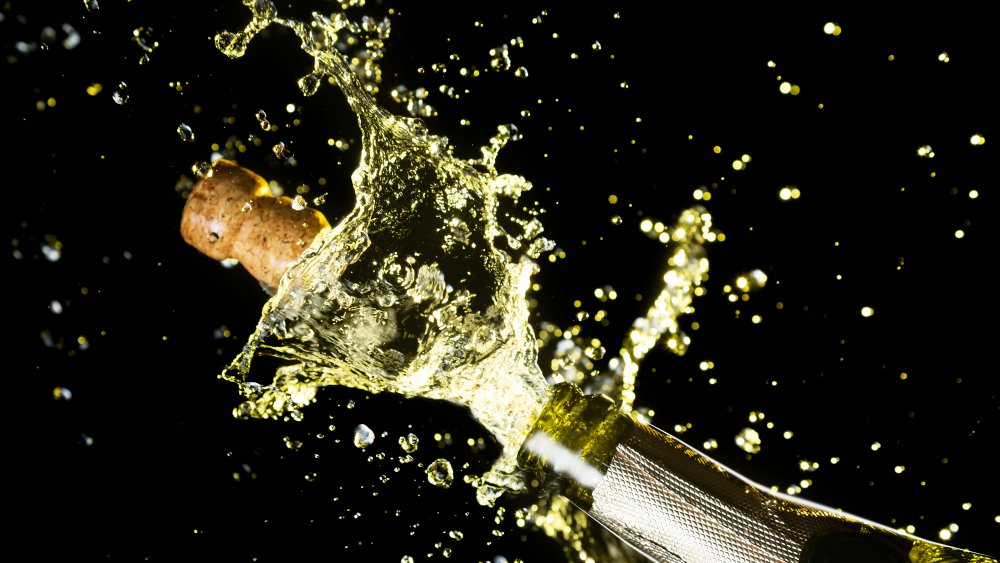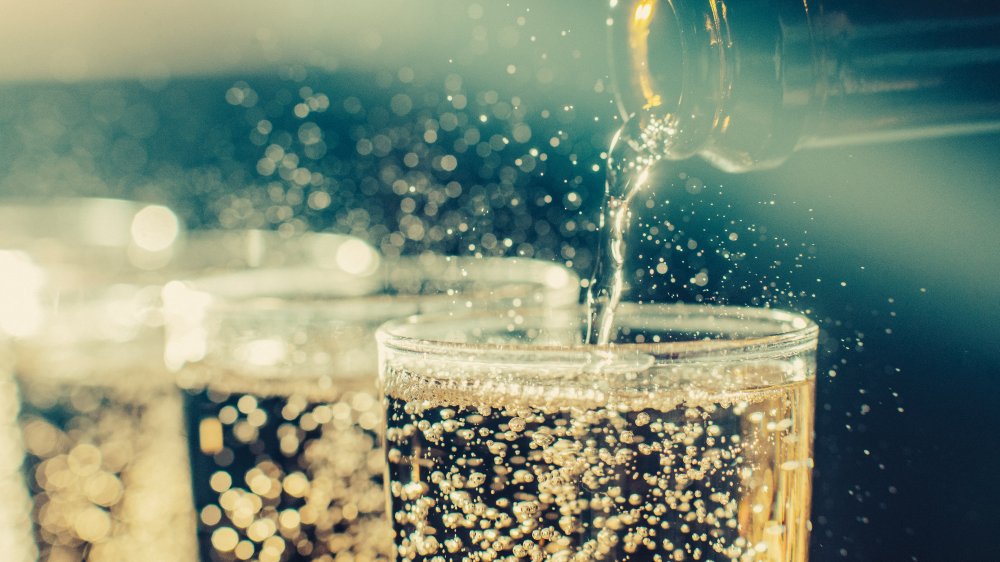The Real Difference Between Brut And Extra Dry Champagne
Whether you're crafting bubbly brunchtime cocktails or popping corks to celebrate the new year, sometimes nothing will fit the bill but champagne (or, okay, maybe a less-pricey prosecco or cava). But these sparkling wines, including champagne, are further delineated by different varieties, such as brut and extra dry. Is there really a major distinction between these two designations?
First, a quick primer on champagne production: This often-expensive sparkling wine is so called because it must be produced in the Champagne region of France and created from a small selection of possible grape varieties, with its making closely guarded by a governing body (via WineCountry). The two-part fermentation process involves adding a certain amount of sugar, among other ingredients — and it's the sugar content that dictates the labeling on the bottle, such as brut or extra dry.
According to Wine Folly, the appropriate amount of sugar is added before corking the bottle, and it's considered a necessary step to counteract the acidity and sour taste that are natural features of a sparkling wine like champagne.
Comparing sugar levels in extra dry and brut champagne
As an umbrella term, brut can actually reflect various levels of sugar content — from driest to sweetest, there's brut nature, extra brut, and brut (via BKWine Magazine). The next groups, from driest to sweetest, are extra dry, sec or dry, demi-sec, and doux. In terms of sugar content per liter, Wine Folly notes that brut nature has zero to three grams, extra brut has up to six grams, brut has up to 12 grams, and extra dry has 12 to 17 grams. (The three sweetest — sec or dry, demi-sec, and doux — can contain from 17 to more than 50 grams.)
Therefore, brut is actually a less sweet version of champagne than extra dry. The reason for the confusing verbiage? BKWine Magazine explains that historically, champagnes were often super saccharine (we're talking more than 100 grams of sugar per liter), so varieties with significantly less sugar were deemed dry in comparison.
Regardless, whether you choose a brut or an extra dry champagne, you'll imbibe far less sugar than you'd find in many other beverages; compare two grams in a 5-ounce glass of brut to the 33 grams you'd consume in a standard Jack Daniels and Coke, for example (via Wine Folly). And, of course, that translates to fewer calories and carbs, too. We'll toast to that!

